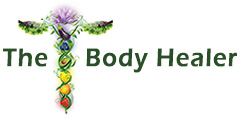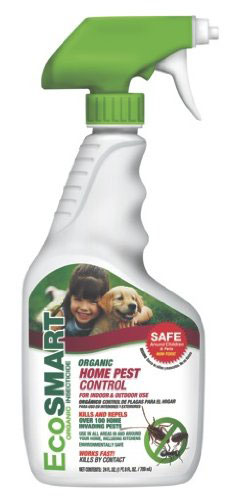Pet-Proofing Your Home
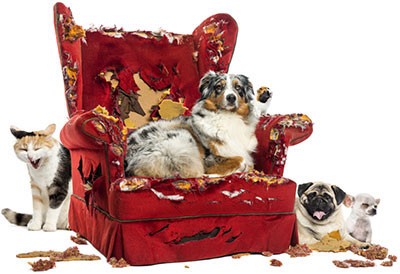
An important part of being the best pet parent you can be is to make sure that you provide a safe home and garden. Puppies especially have an insatiable curiosity to stick their noses in unthinkable places that would not even occur to us!
In the beginning, they will be unable to distinguish your shoe from a playtoy or an electrical cord or other potential hazards. It is up to you to be proactive and protect them from these temptations.
Preparing For New Pets
Learn how to make the necessary preparations with some helpful tip, including:
- Using playpens & safety gates
- Have appropriate toys for them to play with and chew on
- Provide enough attention & playtime
- Provide enough exercise
- Provide training
Preparing for your furry friend...
Get On All Fours!
If you were the height of your furry friend, think about the things you could stick your nose into or nibble on. There should be nothing dangerous below counter level, unless pet/childproof latches prevent access. Common household cleaners, especially liquid drain cleaners and tub/tile cleaners, can be lethal. A fun (and important) experiment is to get down on all fours and wander around the house. Take a look at things from your pet's eye level and see what they see:
The Kitchen
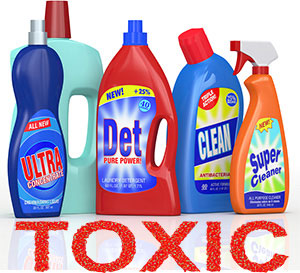 Household cleaning products are one of the biggest hazards in any house. Always store cleaning products in a secure cabinet out of reach of pets and children, especially inquisitive puppies and kitties. Childproof latches are available at any hardware store (and many groceries stores) and can protect curious pets from investigating cabinets off limits.
Household cleaning products are one of the biggest hazards in any house. Always store cleaning products in a secure cabinet out of reach of pets and children, especially inquisitive puppies and kitties. Childproof latches are available at any hardware store (and many groceries stores) and can protect curious pets from investigating cabinets off limits.
If you use cleaning products that contain dangerous chemicals, ditch them in favor of natural alternatives that are not only as effective, but pose no poisonous hazards for either children or pets. When we use traditional cleaners on floors and carpets, the chemicals transfer to your pet's paws and are ingested when they lick them (and pets lick their paws all the time). This concern includes countertops, as cats can jump 7 times the height of their tail.
Products containing bleach applied to surfaces can cause an upset stomach, vomiting, drooling, or diarrhea. They can also cause severe internal burns if swallowed and irritation to the respiratory tract if inhaled, in addition to serious chemical burns from skin contact. Some detergents can produce a similar reaction, and cats can be particularly sensitive to certain ingredients such as phenols.
Did you know that products such as white vinegar, hydrogen peroxide, and baking soda are extremely effective antibacterial cleaning agents? In fact, used correctly, both the EPA and CDC state that they are just as effective as household bleach.
 Follow the Body Healer protocol to learn more about why common household cleaners
Follow the Body Healer protocol to learn more about why common household cleanersare a health hazard & how you can create your own non-toxic cleaning cabinet:
The Body Healer Protocol...
The Bathroom
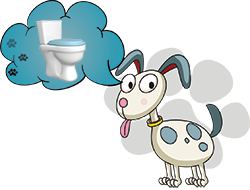 There are many items in the bathroom we need to keep out of reach, including:
There are many items in the bathroom we need to keep out of reach, including:
- Shampoos, conditioners, & hair care products
- Soaps
- Deodorants
- Lotions
- Sunscreens
- Nail polish/nail polish removers
Toilet bowls can be an exciting, thirst-quenching option to a pup - make sure you always keep the lid down or bathroom door closed. This is especially important if you use toilet bleach, which can cause a pet to become very sick if they drink the bleached toilet water.
Medications & Supplements
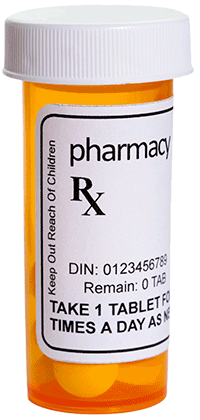 Medications for humans can not only cause your pet to become sick, they can also be fatal. Medications include ointments (including daiper rash), balms, and medicated creams. Unlike children who cannot open childproof plastic medication bottles, pets can chew through them. Make sure that ALL medications are not only kept tightly closed, but are also stored in a secure cabinet that is inaccessible to both pets and children.
Medications for humans can not only cause your pet to become sick, they can also be fatal. Medications include ointments (including daiper rash), balms, and medicated creams. Unlike children who cannot open childproof plastic medication bottles, pets can chew through them. Make sure that ALL medications are not only kept tightly closed, but are also stored in a secure cabinet that is inaccessible to both pets and children.
Some pet owners may mistakenly think that medications used to treat human symptoms will work just as well for animals. Never give your dog or cat a human medication without talking to your vet first. Even something as simple as aspirin can be lethal to your pet. One single acetaminophen tablet can kill an adult cat. Medications such as birth control and vitamins can also cause internal bleeding.
Insect & Rodent Poisons
Insecticides are extremely poisonous substances created to kill. ALWAYS ensure they are kept in a safe place that is completely inaccessible to both pets and children.
If you need to use any insecticidal sprays in your home, ditch the toxic ones and instead use pet and child-safe products that are just as effective, such as:
Ecosmart Organic Home Pest Control (24 or 64 oz.)
Ingredients:
- 2-Phenethyl propionate (derivative of peanut oil)
- Clove Oil
- Rosemary Oil
- Peppermint Oil
- Thyme Oil
- Other ingredients (water, octadecenoic acid, potassium, salt, lecithin)
NEVER, EVER use rat pellets, rat poisons, or other "pellet type" poisons on a property (inside or outside) where you have pets or children. Rodents have a tendency to "carry" the poisons around and leave behind pieces of them that children, and especially pets, can then eat.
Serious dangers of using pesticides...
Garage & Yard Hazards
Generally speaking, never allow your pet to be unsupervised in the garage. Products such as antifreeze, fertilizers, gasoline, weed killers, car cleaning products, paints, paint thinners/mineral spirits, and other items are very dangerous and highly toxic. Oil and other liquids leaking from cars and tractors on the ground can be transferred to paw pads that your pet then licks. These substances can make them very sick.
| Canine Cancer Canine malignant lymphoma has been associated with dog owner’s use of 2,4-D on their lawns (this ingredient is in many commonly used weed killers and herbicides). The risk of canine malignant lymphoma increases 2-fold with 4 or more yearly owner applications of 2,4-D.(1) |
If you use a lawn or garden care company, check that the products they use are safe and eco-friendly. Be especially wary of companies who state their products are toxic, but say "oh, it's OK - wait several hours and then it should be fine for your pet to play on." Common sense tells us that the poisons have not disappeared, but have become absorbed by the landscape. Using these products is an unnecessary health danger.
General Household Hazards
Other things to look out for include:
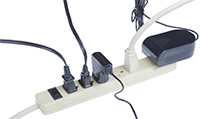 Electrical cords (fun chew toys for teething puppies).
Electrical cords (fun chew toys for teething puppies).- Liquid potpourri (which can cause mouth ulcerations in pets ).
- Tobacco.
- Batteries.
- Loose nails, screws, and other sharp objects.
- Mothballs. Even a single mothball can make your dog or cat sick. Mothballs containing naphthalene can cause serious illnesses in both cats and dogs, such as liver, kidney, and blood cell damage, brain swelling, seizures, and coma.
Pet-Safe House Plants
Check that your house plants are safe for your pets in the unfortunate event they get chewed on. There are several species of house plants that can cause a reaction in pets, ranging from a tummy ache, to vomiting, to serious and life threatening reactions.
In general, do not allow your pet to chew on bulbs as some bulbs (such as daffodil, gladiola, and tulip) are the most toxic part of the plant and can cause severe gastrointestinal problems, and worse.
Here is a list of the most common household plants that can be toxic to pets:
| Aloe Vera Amaryllis Azalea/Rhododendron (highly toxic) Baby's Breath Begonia Carnations (mild tummy discomfort) Castor Beans (highly toxic) Chrysanthemum Cyclamen Daffodils Gladiolas Holly (berries) Hosta |
Ivy Lilies (highly toxic for cats, not for dogs) Milkweed (highly toxic) Mistletoe Morning Glory Oleander (highly toxic) Poinsettia (mild tummy discomfort) Pothos (mild tummy discomfort) Sago Palm (highly toxic, especially the seeds) Tomato Plant (mild tummy discomfort) Tulips Yew (highly toxic) |
Human Foods Toxic To Pets
Here are some of the common foods we may love to eat but that are not healthy for our pets. These include:
- Dark & milk chocolate (the darker, the more toxic)
- Coffee
- Yeast dough
- Macadamia nuts
- Avocado
- Grapes
- Raisins
- Onions
- Alcohol
Garlic
 Garlic is NOT toxic for dogs, contrary to the preaching of some websites. In fact, it is recommended by many Naturopathic and traditional veterinarians. We at The Body Healer have always used garlic in our pet's food. As well as being beneficial for a dog's gastrointestinal tract, it also helps fight parasites and protozoan organisms.
Garlic is NOT toxic for dogs, contrary to the preaching of some websites. In fact, it is recommended by many Naturopathic and traditional veterinarians. We at The Body Healer have always used garlic in our pet's food. As well as being beneficial for a dog's gastrointestinal tract, it also helps fight parasites and protozoan organisms.
Garlic has proven to do wonders for dogs with immune system issues, as well as for those fighting cancer as it stimulates cells that kill bad microbes and cancer cells.
RELATED ARTICLES
- Healthy & balanced pet diet
- Tips on choosing a healthy pet food
- Home-cooked diet
- Raw food diet for pets
- Doing raw right for pets
- Home-baked doggy treats
- Bones - nature's toothbrush
- Bone broth recipe
- Why pets are getting sicker
- Pet food recalls
- Fleas, ticks, & mosquitoes
- Natural dog grooming
- Pet dental care
- Pet dental kit
- Anesthesia-free teeth cleaning
- Pet vaccinations
- Declawing
